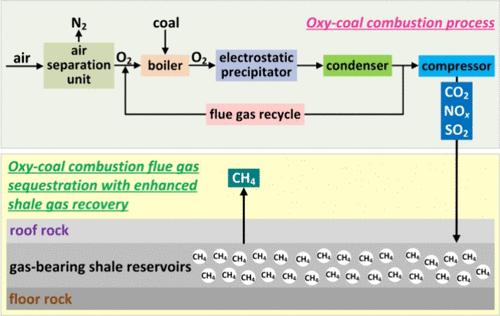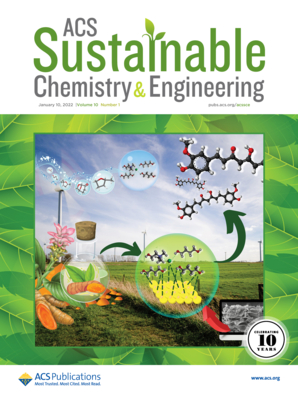Physical Property Responses of Shale Matrix and Its Surrounding Rocks to CO2/Oxy-Coal Combustion Flue Gas Exposure: Implications for Fluid Storage Stability Assessment
IF 7.3
1区 化学
Q1 CHEMISTRY, MULTIDISCIPLINARY
引用次数: 0
Abstract
To preliminarily validate the storage stability of CO2, SO2, and NOx within gas-bearing shale reservoirs, one representative shale and its surrounding rocks were exposed to CO2/flue gas at 30 MPa and 353.15 K for 60 days, and changes in their physical properties were investigated. Results indicated that the CO2/flue gas–H2O exposure raised sample complexity via mineral dissolution and precipitation. Mineral dissolution increased micropores of the roof rock, while precipitation decreased micropores of the shale and floor rock and mesopores of all samples. Thereinto, the flue gas–H2O exposure demonstrated higher influential degrees than those of the CO2–H2O exposure. Furthermore, the CO2–H2O exposure enlarged macropores of the surrounding rocks but narrowed those of the shale. The flue gas–H2O exposure oppositely affects macropores as the does, which is more conducive for fluid storage. Although the CO2–H2O and flue gas–H2O exposures transformed small-scale pores into medium- and large-scale pores/fractures, they reduced sample permeability by 62.51–86.43% and 65.47–90.21%, respectively. Such phenomena suggested stronger flue gas–H2O–shale interactions and a better sealing capability of the surrounding rocks for flue gas than for CO2. Overall, flue gas can react with shale/surrounding rocks more intensively than CO2, making shale reservoirs a promising geologic formation for the stable storage of CO2, SO2, and NOx.

页岩基质及其围岩对CO2/氧煤燃烧烟气暴露的物性响应:对流体储存稳定性评价的意义
为初步验证含气页岩储层中CO2、SO2和NOx的储存稳定性,以某代表性页岩及其围岩为研究对象,在30 MPa、353.15 K的CO2/烟道气环境中暴露60 d,考察其物理性质的变化。结果表明,CO2/烟气- h2o暴露通过矿物溶解和沉淀提高了样品的复杂性。矿物溶蚀作用增加了顶板岩石的微孔,而降水作用减少了页岩和底板岩石的微孔和中孔。其中,烟气- h2o暴露的影响程度高于CO2-H2O暴露。此外,CO2-H2O暴露扩大了围岩的大孔隙,缩小了页岩的大孔隙。烟气- h2o暴露对大孔隙的影响与之相反,更有利于流体的储存。CO2-H2O和烟气- h2o暴露虽然将小孔隙转化为中、大孔隙/裂缝,但使样品渗透率分别降低62.51 ~ 86.43%和65.47 ~ 90.21%。这些现象表明,烟气- h2o -页岩相互作用更强,围岩对烟气的密封能力强于对CO2的密封能力。总的来说,与二氧化碳相比,烟气与页岩/围岩的反应更强烈,这使得页岩储层成为稳定储存CO2、SO2和NOx的有希望的地质地层。
本文章由计算机程序翻译,如有差异,请以英文原文为准。
求助全文
约1分钟内获得全文
求助全文
来源期刊

ACS Sustainable Chemistry & Engineering
CHEMISTRY, MULTIDISCIPLINARY-ENGINEERING, CHEMICAL
CiteScore
13.80
自引率
4.80%
发文量
1470
审稿时长
1.7 months
期刊介绍:
ACS Sustainable Chemistry & Engineering is a prestigious weekly peer-reviewed scientific journal published by the American Chemical Society. Dedicated to advancing the principles of green chemistry and green engineering, it covers a wide array of research topics including green chemistry, green engineering, biomass, alternative energy, and life cycle assessment.
The journal welcomes submissions in various formats, including Letters, Articles, Features, and Perspectives (Reviews), that address the challenges of sustainability in the chemical enterprise and contribute to the advancement of sustainable practices. Join us in shaping the future of sustainable chemistry and engineering.
 求助内容:
求助内容: 应助结果提醒方式:
应助结果提醒方式:


